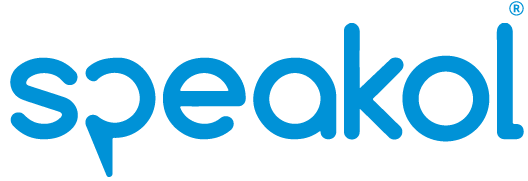
To enhance your campaigns’ performance, you need to constantly review and optimize different metrics in an attempt to make the most out of your campaigns. This will allow you to review and make the appropriate modifications and changes when necessary.
Prepare Your Content Before Launching Your Campaign:
When you set up your campaign, we advise you to read through Speakol’s tips and best practices for writing your titles, designing your thumbnails, and creating your landing pages. These guidelines will make your campaign more userfriendly, engaging, and exciting. By keeping in mind these tips, you will have a better chance of succeeding.
Set Up Your Campaigns for Success:
By following some of our tips and tricks, you have optimized some elements even before you have officially started. Setting up your campaigns for success is vital; it will empower you with the tools and data needed to make smart, well-informed decisions to keep improving and optimizing your campaigns’ performance.
Here are some tips to help you succeed:
1. Create Multiple Campaigns:
- Separate your campaigns by device:
User experience and behaviors tend to differ across devices; therefore, we advise you to create separate campaigns for each device. For instance, it may be more practical to add credit card details to purchase products on desktops rather than mobile devices, and it may be easier to add links to download applications on mobile devices rather than desktops. - Separate your campaigns by location:
Campaign performance may vary according to the difference in locations and market competitiveness. It is better to target audiences based on their locations, which may shed light on their behavior patterns and interests. - Separate your campaigns by-products or content-type:
You need to vary conversion and engagement rates for different products and content. You need to set a flexible strategy to accommodate various products. That is why it is more practical, manageable, and easier to track if you separate products and content accordingly.
2. Set a Budget That Works for You:
Once you launch your campaign, it is vital to have enough liquidity to experiment and gather enough data that can allow you to make informed decisions as to how to proceed. This data will enable you to make modifications that will improve and enhance the performance of your campaign. We do recommend setting a budget that will allow a minimum of $50 a day to spend, at least in the beginning.
At the same time, you need to be cautious and don’t spend your budget too quickly before adequately assessing your campaign’s performance. We do recommend that you begin with a small amount before significantly increasing your budget. This way, you can ensure that your money will be well spent and lead to your campaign’s success.
3. Set a CPC that Works for You:
Set a CPC that allows you to achieve your goals. If your CPC is too low, you may be unable to secure the number of clicks your campaign needs, because a low CPC will allow your campaign ads to be displayed less frequently than others. If your CPC is too high, the clicks will be too expensive, and the return will be too low.
We do recommend that you start with a high CPC to ensure that your campaign items are competitive and are displayed often enough to gather data. Once you have enough clicks to formulate informed optimal decisions, you can adjust your CPC.
4. Don’t Add too many Campaign Ads:
Don’t overwhelm yourself with too many campaign ads. Start with a manageable number until you get the hang of it. You can start adding more campaign ads after assessing the performance and learning more about the platform.
We recommend that you start with one unique destination URL per campaign with one or two adsets with a maximum of ten campaign ads. If you aim to increase your brand awareness, we recommend that you start with 10-20 unique destination URLs per campaign, and around 5-10 campaign ads per destination URL.
Improve the Performance of your Campaign Ads:
1. “Pre Qualify” Your Clicks:
With its unique title and thumbnail, your campaign ad should present what the user will experience once he is directed to your landing page. The user should know what to expect beforehand; otherwise, he might be confused and leave before actively engaging with your landing page. That is why the campaign ad should serve a “sneak peak”. This way, you can drive clicks from genuinely interested users, who are more likely to become customers.
2. Don’t Use Misleading Titles:
Don’t be tempted to use attractive titles that are unrelated to your content. Once the user feels tricked, he will leave your landing page immediately without engaging with it. By creating engaging, descriptive titles, you will ensure to get clicks from interested users.
3. Use Titles with Dynamic Keywords:
Create titles that are specific to some users using keywords that highlight a particular location or device. These titles will eventually generate more clicks and increase user engagement. Learn more about creating dynamic keywords here
Track the Performance of your Campaign:
1. Use the Speakol Conversion Tracking Code:
Speakol has created a conversion tracking code that can help you monitor your campaign’s performance and constantly assess its progress. It displays the level of engagement, conversion, and other valuable insights that will enable you to make informed decisions to optimize your resources and achieve your goals.
2. Use Reports to track Performance:
Reports offer real-time campaign data. This feature allows you to monitor the performance of your campaigns.
Target Highly Engaged Users:
1. Monitor and Adjust your Campaign Targeting Options:
We recommend you start with a broad targeting; then, as you monitor your campaigns’ performance, you can begin to narrow down your targeting options to ensure the success of your campaigns. Once you have enough clicks, you can optimize and readjust your targeting options.
- Create new campaigns with different budgets and bidding strategies for different target groups. This strategy will allow you to know if a particular campaign performs better at certain hours, you can increase your CPC to increase traffic and garner more valuable clicks. If you realize that a campaign is not performing well, you can alter the schedule, or vary the CPC budget. You can also completely discard targeting options that are not driving positive results, and instead, transfer these resources to successful campaigns.
- To optimize your resources, consider these targeting options:
A. Location
B. Device
C. Websites
D. Internet Service Provider
Increase Click Volume:
- Increase your CPC bid:
This will render your campaign ads more competitive on the Speakol network, which will lead to more clicks, and consequently, more leads. - Increase your CTR:
This will render your campaign ads more competitive on the Speakol network, which will lead to more clicks, and consequently, more leads. You can try to increase your CTR by adding title and thumbnail variations. - Add New Campaign Ads:
By adding more campaign ads, you are raising the chances of creating campaign ads that will appeal to different users and prompt them to click. - Widen your Targeting Reach:
Try widening your targeting reach, whether it is by targeting a new location, or devices.
Boost Top Performing Campaign Ads:
1. Speakol’s campaign reports will allow you to examine your campaign ads’ performance and assess which combination of title and thumbnail will generate the highest CTR and engagement as well as CPL.
- CTR: If the CTR of a campaign ad is high, this means that users are clicking on this ad more than others. However, if the CTR is low of a campaign ad, this means that users are not clicking enough on this campaign ad, in this case, we recommend you modify or change it to produce better results.
- Conversion: CTR is important, but the most crucial element is the conversion and engagement rate. The higher the conversion rate, the better your campaign ad will be performing.
- CPL: CPL will let you know whether the clicks your campaign ads are valuable or not, and how they will affect your ROI. You need to ask yourself how much you are willing to pay for the desired action taken on your landing page or website. This is how you can assess whether a campaign ad is successful or not.
2. Pause Low Performing Campaign Ads:
By reviewing the above metrics, you can have a thorough report of your campaign ads’ performance. So if some campaign ads are not performing well, meaning they have a low conversion rate compared to others, you can pause them.
Optimize Campaign Ads:
Campaign ads include elements like titles, thumbnails, and landing pages. The report page will inform you about how your campaign ads are performing. You can allocate more budget to the highest performing ads, and pause the ones who are performing moderately. Assess the performance by considering both conversion and CPL metrics.





